The Importance of Uranus in the Birth Chart
Astrology is an ancient practice that has gained popularity over the years, and it allows us to understand how celestial bodies affect our lives. One such celestial body is Uranus, a distant planet discovered by William Herschel in 1781. Uranus is an outer planet; in astrology, it represents change, rebellion, freedom, and revolution.
It is associated with innovation, disruption of tradition and conformity, and breakthroughs. Uranus’ placement in a birth chart can indicate where we want to break free from conventional norms and embrace our individuality.
Its influence can be felt across different areas of life – career choices, relationships with others or oneself – anywhere a person may feel boxed in or restrained by societal expectations. In astrology, birth charts show the planets’ position when one was born.
The birth chart highlights each person’s unique strengths and weaknesses by interpreting their planetary positions relative to one another. Uranus’ positioning on an individual’s birth chart significantly determines their tendency towards radical change.
Brief Overview of Uranus in Astrology
The seventh planet from the Sun is named after the Greek god of heaven, Ouranos (meaning sky). It’s interesting to note that another name for this god, Caelum, means “chisel” or “hammer,” which accentuates its association with inventive ideas breaking through old patterns.
As previously mentioned, Uranus represents originality and rebellion against what already exists. When it comes to an individual’s personality traits related to this planet’s influence depends on which zodiac sign it falls under during their birth year.
When analyzing your astrological report or someone else’s chart concerning transits involving Uranus, it is essential to consider the planet’s position and the aspects it forms with other planets. Aspects are geometric angles formed between two celestial bodies and can be like a conjunction (same zodiac degree) or a square (90-degree angle).
Why Understanding Uranus Matters
Uranus is often referred to as the great awakening because of its ability to break down established systems and structures, allowing people to develop new ways of thinking. Astrologically, it governs sudden changes in our lives, whether happy or unpleasant experiences. The influence of Uranus can manifest as unexpected events that throw us off balance but ultimately lead us toward greater personal growth.
Understanding how Uranus impacts our lives can provide an opportunity for self-reflection and growth. By embracing the rebellious energy of this planet, individuals can look at areas in their life where they feel constrained by routine and explore innovative methods for expanding their horizons.
However, when not harnessed correctly or balanced with other planetary energies in a birth chart, Uranian influences could cause chaos rather than blissful change. Uranus’ significance in astrology cannot be ignored.
It represents radical progress tempered by disruption and revolutionizes every sphere of life it touches while creating new spaces for innovation and individuality to flourish. A deeper understanding of this unconventional planet’s influence on our birth charts allows us to break free from societal norms that stifle individuality and embrace change on our terms – leading us toward greater personal growth.
Historical Background
British astronomer William Herschel discovered Uranus, the seventh planet from the Sun and the third largest in our solar system, on March 13, 1781. Herschel was observing the night sky with a homemade telescope when he noticed an object he initially believed to be a comet.
However, as he continued to observe it over several nights, he eventually determined that it was a new planet. The discovery of Uranus marked a significant milestone in astronomy and challenged conventional wisdom about the size of our solar system.
Before this discovery, it was thought that only six planets were orbiting the Sun: Mercury, Venus, Earth, Mars, Jupiter, and Saturn. Herschel’s discovery added another planet to this list and expanded our understanding of the universe.
Discovery of Uranus by William Herschel in 1781
William Herschel was born in Hanover, Germany in 1738. He moved to England at age 19 and began working as a musician before focusing on astronomy.
In addition to discovering Uranus, he significantly contributed to our understanding of comets and double stars. Herschel named his discovery “Georgium Sidus” (George’s Star) after King George III of England.
However, this name did not catch on outside of England. In France and other countries where anti-British sentiment was intense due to ongoing conflicts between nations during that period leading up to the Napoleonic Wars – astronomers began referring to instead as “Herschel” or “the Georgian Planet.”
Naming and mythology behind the Planet
The name Uranus comes from Greek mythology with reference from Roman antiquity, who named him Caelus or Coelus– meaning sky or heaven – which is also the origin of the word “celestial.” In Greek mythology, Uranus was the god of the sky, the father of Cronus (Saturn), and the grandfather of Zeus (Jupiter). Uranus was married to Gaia, the Earth goddess. Together, they gave birth to many children, including the Titans and Cyclopes.
The mythology behind Uranus reflects its astrological significance as a symbol of innovation, rebellion, and unconventional thinking. The planet’s discovery coincided with significant social and political revolutions in Europe, such as the American Revolution in 1776, which showed characteristics associated with Uranus in astrology.
Understanding the historical background behind Uranus gives us a deeper appreciation for its importance in our solar system and astrology. Its discovery marked a turning point in our understanding of the universe, while its symbolism and mythology connect it to important themes that impact our lives today.
Astrological Significance
Characteristics and Traits Associated with Uranus
Regarding astrology, Uranus is known for being the planet of revolution, innovation, and unexpected change. It’s associated with progressiveness, rebellion against the status quo, and a desire for freedom.
These traits are reflected like Uranus-ruled people, often described as unconventional, eccentric, and creative. Individuals with prominent Uranus placements in their birth chart tend to be innovative thinkers, unafraid to challenge traditional norms or experiment with new ideas.
They also have a strong sense of independence and value autonomy. Although they can be unpredictable sometimes, they are known for their ingenuity and ability to think outside the box.
Influence on Individual Birth Charts Based on Its Placement
Uranus’ placement in an individual’s birth chart can provide insight into some core personality traits. For example, if Uranus is located in the first house (the house of self), this suggests that this person is unique and individualistic. They may also have a strong desire to stand out from the crowd.
If Uranus is located in the seventh house (the house of partnerships), this suggests that this person may seek unconventional relationships or may prefer non-traditional roles within their relationships. The aspect that Uranus makes to other planets in an individual’s birth chart can also provide insight into how this planet influences them.
A conjunction between Uranus and Mars could suggest a strong desire for freedom combined with impulsiveness or aggression. However, a trine between Venus and Uranus could tell someone who values uniqueness and creativity within partnerships.
Relationship to Other Planets and Aspects
In astrology, aspects refer to the angles created between planets in an individual’s birth chart. The relationships between these planets can provide insight into an individual’s personality traits and tendencies. Regarding Uranus, its aspects with other planets can emphasize its influence in different areas of life.
For example, if Uranus is in tight conjunction with the Sun, this suggests that this person’s individuality and desire for freedom are strongly tied to their sense of self. If Uranus is in a tight square aspect with Mercury, this could suggest that this person struggles with impulse control or has difficulty communicating effectively.
Overall, understanding the astrological significance of Uranus can provide valuable insights into an individual’s personality traits and tendencies. Its placement and aspects within a birth chart contribute to one’s unique blend of features and characteristics that make up their astrological identity.
Impact on Generations
Uranus is considered a generational planet; entire generations can feel its influence. This means individuals born within a specific time frame share similar characteristics and experiences related to Uranus in their birth charts. Understanding the impact of Uranus on different generations can provide insight into collective themes, values, and trends.
Explanation of the concept of generational planets
Generational planets are slow-moving outer planets that spend several years or even decades in each zodiac sign. Their influence is felt broadly across entire generations rather than individually. In addition to Uranus, Neptune, and Pluto are also considered generational planets.
These more significant societal trends can manifest in various ways, such as cultural shifts, political movements, or technological advancements. Astrologers often look at the placement of these generational planets in a birth chart to understand how these broader themes may influence an individual in their life.
Uranus’ influence on specific generations, including Baby Boomers, Gen X, and Millennials
Uranus was in the sign of Leo from 1955-1962, when many Baby Boomers were born. This generation is associated with creativity, self-expression, and rebellion against traditional values. They grew up during significant social change with events like the Civil Rights Movement and anti-war protests.
Gen X was born during Uranus’ transit through Scorpio from 1975-1981. This generation is known for being independent thinkers who value privacy and self-reliance.
They came of age during a time marked by economic uncertainty and global political upheaval. Millennials were born while Uranus was transiting through Aquarius from 1996-2003.
This generation has been shaped by technology and social media while also concerned with social justice and environmental issues. They are often seen as innovative and inclusive, with a desire to break down traditional barriers.
Overall, understanding the impact of Uranus on different generations can provide a valuable perspective on societal trends and individual experiences related to this generational planet. Astrologers can use this knowledge to gain insight into collective themes and patterns that shape our world.
Uranian Astrology Techniques
Overview of techniques used in Uranian astrology, including midpoints and planetary pictures
Uranian astrology is a unique and powerful astrological system that uses specific techniques to interpret the birth chart. Midpoints and planetary pictures are two of the most popular methods used in Uranian astrology. Midpoints are a commonly used technique in Uranian astrology because they can provide insight into an individual’s personality traits, life events, and relationships.
A midpoint is between two planets or sensitive points in the horoscope. For example, suppose an individual has a compromise between their Sun and Moon at 15 degrees Leo. In that case, the combination of these two celestial bodies will strongly influence their personality.
Planetary pictures are another popular technique used in Uranian astrology. This technique involves grouping three planets or sensitive points within a specific degree range on the horoscope wheel.
The resulting picture provides insight into an individual’s personality traits, strengths, challenges, and life events. For example, if an individual has a Mars-Uranus-Pluto picture at 20-22 degrees Aquarius, this would indicate that they possess exceptional drive and ambition but may struggle with impulsivity or erratic behavior.
Examples of how these techniques can be applied to interpret a birth chart
Let’s look at a real-life example birth chart to understand better how midpoints and planetary pictures work in practice. John was born in Los Angeles on August 12, 1991, at 10:35 AM.
Upon analyzing his chart using Uranian astrology techniques, we find that his Sun-Moon midpoint falls at 16 Leo while his Venus-Jupiter midpoint falls at 18 Scorpio. This suggests that John is likely very creative yet also quite self-critical – he places high expectations on himself and may experience difficulty accepting compliments or praise.
Additionally, John has a Mercury-Saturn-Neptune planetary picture at 9-11 Capricorn, indicating that his communication style is meticulous and deliberate but can also be mystical or imaginative. He may struggle with self-doubt or criticism regarding his ideas or creative endeavors.
Midpoints and planetary pictures offer valuable insights into an individual’s personality, strengths, challenges, and life events. When combined with other astrological techniques, such as transits and progressions, Uranian astrology can provide powerful guidance for individuals seeking better to understand themselves and their place in the world.
Lesser-Known Facts about Uranus
Unique physical characteristics of the planet
Uranus is a fascinating planet with unique physical properties that set it apart from others in our solar system. One of the most exciting features of Uranus is its tilt – it is tilted at an angle of almost 98 degrees, which gives it a somewhat lopsided appearance. This extreme tilt also means that Uranus has seasons that last many years, instead of just a few months, like on Earth.
Another intriguing aspect of Uranus is its magnetic field, which is highly tilted compared to its axis. This means that the solar wind can distort Uranus’ magnetosphere in such a way that it forms an elongated tail-like structure unlike any other planet’s magnetic field.
Uranus has a system of rings around it similar to Saturn’s famous ring system but much less well-known. These rings consisted mainly of dust and rocky debris and were first discovered in 1977 by astronomers who observed them passing before a star.
Obscure myths or cultural references related to Uranus
In ancient mythology, Uranus was the Greek god of the sky and husband to Gaia, the earth goddess. According to legend, he was overthrown by his son Cronus (Saturn in Roman mythology), who castrated him and took his place as ruler.
The name “Uranus” itself has some interesting cultural references as well. It comes from the ancient Greek word “Ouranos,” which means “sky” or “heaven.” Interestingly enough, this same root word also gave rise to our modern English word “uranium,” which was named after the planet because uranium was initially discovered through observations made using a spectroscope on sunlight passing through its atmosphere.
In astrology, there are many interpretations of what Uranus represents and its astrological influence. Some see it as a force of revolution and change, while others associate it with sudden upheavals or unexpected disruptions in life.
Regardless of the specific interpretation, it is clear that Uranus has a unique and powerful place in the astrological system. There are some interesting modern cultural references to Uranus as well.
For example, the planet was famously referenced in a 1992 episode of The Simpsons, where Bart Simpson makes a prank phone call to his school’s astronomy hotline asking to speak to “Hugh Jass” (a pun on “huge ass”) and is told to ask for someone named “Amanda Hugginkiss” instead. When he asks if anyone knows this person, another student responds, “I’m looking for Amanda Hugginkiss too… hey guys, do you know Amanda Hugginkiss?” leading to loud laughter from Bart’s friends.
Conclusion
Summary of Key Points About Uranus in Astrology
Uranus is a unique planet that carries a strong influence on astrology. From its discovery in 1781 to its current role in modern astrological practice, astrologers have studied and analyzed Uranus worldwide.
Its characteristics and traits are associated with innovation, rebellion, and unexpected change. The placement of Uranus in an individual’s birth chart can provide insight into their personality, strengths, and challenges.
Uranian astrology techniques such as midpoints and planetary pictures can offer additional layers of interpretation to an already complex birth chart analysis. Understanding Uranus’ impact on specific generations – from the Baby Boomers to Millennials – sheds light on societal shifts over time.
Final Thoughts on the Importance of Understanding Uranus’ Influence
Studying Uranus in astrology offers us a unique perspective on ourselves as individuals and as a society. By understanding how this planet influences our lives – personally and collectively – we can gain greater insight into our strengths, challenges, and opportunities for growth.
Uranus invites us to embrace innovation, explore new ideas and ways of thinking, and challenge traditional structures that may limit us from reaching our full potential. It reminds us that change is inevitable but also an opportunity for growth.
By embracing the energy of Uranus in our lives (whether through meditation or other spiritual practices), we can channel its power toward creating positive change within ourselves and society at large. Ultimately, studying this planet from an astrological standpoint offers us a deeper appreciation for the complexity and wonder of our universe.






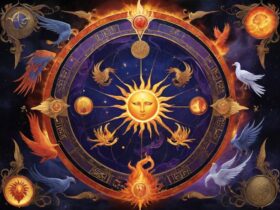
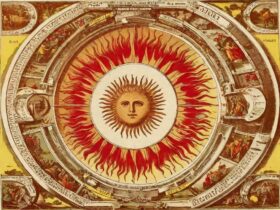
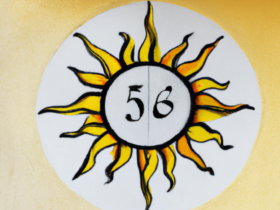
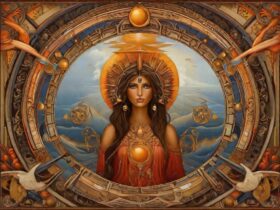

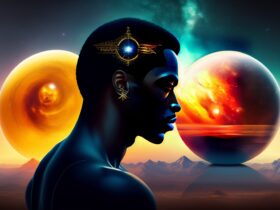
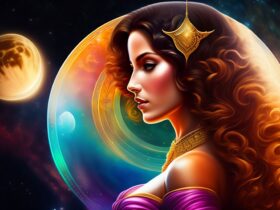

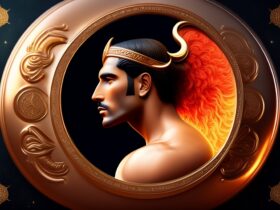



Leave a Reply